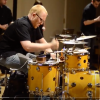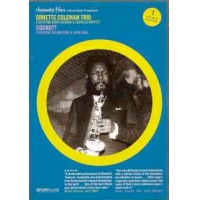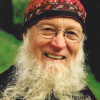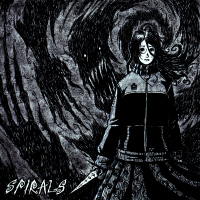Home » Jazz Musicians » John Cage
John Cage
In 1952, David Tudor sat down in front of a piano for four minutes and thirty-three seconds and did nothing. The piece 4?33--written by John Cage, is possibly the most famous and important piece in twentieth century avant-garde. 4?33--was a distillation of years of working with found sound, noise, and alternative instruments. In one short piece, Cage broke from the history of classical composition and proposed that the primary act of musical performance was not making music, but listening.
Born in Los Angeles in 1912, Cage studied for a short time at Pamona College, and later at UCLA with classical composer Arthur Schoenberg. There he realized that the music he wanted to make was radically different from the music of his time. "I certainly had no feeling for harmony, and Schoenberg thought that that would make it impossible for me to write music." He said "You'll come to a wall you won't be able to get through." So I said, "I'll beat my head against that wall." But it wasn't long before Cage found that there were others equally interested in making art in ways that broke from the rigid forms of the past. Two of the most important of Cage's early collaborators were the dancer Merce Cunningham and the painter Robert Rauschenberg.
Together with Cunningham and Rauschenberg at Black Mountain College, Cage began to create sound for performances and to investigate the ways music composed through chance procedures could become something beautiful. Many of Cage's ideas about what music could be were inspired by Marcel Duchamp, who revolutionized twentieth-century art by presenting everyday, unadulterated objects in museum settings as finished works of art, which were called "found art," or ready-mades by later scholars. Like Duchamp, Cage found music around him and did not necessarily rely on expressing something from within.
Cage's first experiments involved altering standard instruments, such as putting plates and screws between a piano's strings before playing it. As his alterations of traditional instruments became more drastic, he realized that what he needed were entirely new instruments. Pieces such as "Imaginary Landscape No 4" (1951) used twelve radios played at once and depended entirely on the chance broadcasts at the time of the performance for its actual sound. In "Water Music" (1952), he used shells and water to create another piece that was motivated by the desire to reproduce the operations that form the world of sound we find around us each day.
Read moreTags
John Cage: Hymnkus, Thoreau Drawings, Two

by John Eyles
Another Timbre recordings featuring music by John Cage are into double figures and those featuring Apartment House now number thirty-something, so there was a certain inevitability about this album on which Apartment House perform three Cage pieces. It does not seem long since the label's box set of Apartment House playing some of Cage's number pieces was issued to unanimous praise, but the current album, recorded in January and April 2022, is very different. Its three tracks, the titles of ...
Continue ReadingStefano Luigi Mangia: Cagexperience
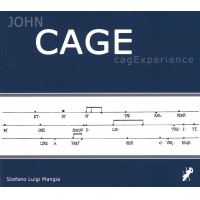
by Alberto Bazzurro
Il trentatreenne leccese Stefano Luigi Mangia si è andato negli ultimi tempi affermando come una delle voci maschili più interessanti del panorama nazionale di ricerca. In questo lavoro monografico su John Cage, gli è prezioso sodale il corregionale Gianni Lenoci, che le note di copertina accreditano genericamente all'elettronica, mentre è tutto un florilegio di suoni e rumori vari quello che si dischiude in particolare nel brano più ampio del lotto, “Four6" (mezz'ora, metà disco), vale a dire il primo dei ...
Continue ReadingJohn Cage's Roaratorio, An Irish Circus on Finnegans Wake at Happy Days Enniskillen International Beckett Festival 2014

by Ian Patterson
John Cage's Roaratorio, An Irish Circus On Finnegans Wake Happy Days Enniskillen International Beckett FestivalMarble Arch Caves N. Ireland July 31, 2014 Standing on a street corner watching and listening to the world around you may not seem like an extraordinary event; after all, it's an everyday occurrence for millions of people around the world. For composer John Cage, it was a street corner--it just happened to be in Seville--and the infinite number ...
Continue ReadingJohn Cage: Ryoanji

by Raul d'Gama Rose
In the vivid imagination of John Cage, a perfect storm of ideas was always at work. And when the composer's mind opened up to the exactitude of spatial geometry and the asymmetrical balance of nature, magical things happened in the world of music. One of these was Ryoanji, a singularly beautiful work inspired by a visit to a 15th Century, eponymous Zen garden. Cage visited Ryoanji (Peaceful Dragon) in 1962, and the garden had a profound and transformative effect on ...
Continue ReadingNew Hat(Now)Art Releases Available: Morton Feldman: For Samuel Beckett and John Cage: Imaginary Landscapes

Source:
All About Jazz
Morton Feldman: For Samuel Beckett (1987) performed by Ensemble Modern (reissue) hat(now)ART 142 Total time 43:36, ADD, Barcode: 752156014225 For Samuel Beckett is a late (1987) work, rich in detail and lush in sound (especially in relation to so many of his more austere pieces, early and late), but troubling, obsessed, claustrophobic in spite of its scope. Given their shared attraction to shadow (Feldman's music uses chiaroscuro in the way Beckett meticulously exploited darkness and light ...
read more





